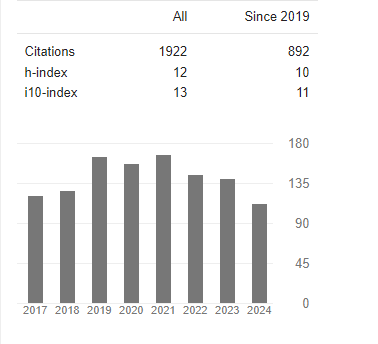On the Regularity of the Electron Configuration of Atoms in the Periodic Table
Abstract
Toshihiro Konishi, Ryosuke Miura
The current periodic table does not necessarily have a clear position for transition elements. Therefore, the purpose of this paper is to use the basic principle discovered by Mendeleev as it is and to create a periodic table with consistency for transition elements. By setting some hypotheses, it was found that transition elements also have regular periodicity, so we succeeded in clarifying the energy level of electrons in each orbit. In addition, by utilizing its periodicity, the electron configuration for each orbit was predicted for unknown elements. In this paper, we did not take the conventional idea of electron orbitals, that is, the idea of forming a hybrid orbital, but assumed a new orbital. Since the state in which electrons fit in orbits and stabilize is defined as an octet, this idea was used as the basic principle in this paper, but the hypothesis that "there are only three orbits in each shell" was established and verified. The calculation of the energy level of the electrons on the orbit became extremely easy, and the order of each orbit could be clarified. It was also found that the three-dimensional structure of the molecule may be visualized by paying attention to the valence electrons of the outermost shell of the element and the octet of the stability condition. Therefore, in this paper, by slightly expanding the structural formula of Kekulé, it became possible to easily determine whether or not the molecule synthesized by the bond between elements is stable. In addition, it has become possible to predict the three-dimensional structure of the molecule as well. Furthermore, not only will it be easier for students studying chemistry to understand complex chemical reactions, but it will also be useful for researchers in the development and research of new drugs.



